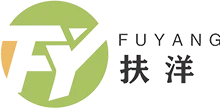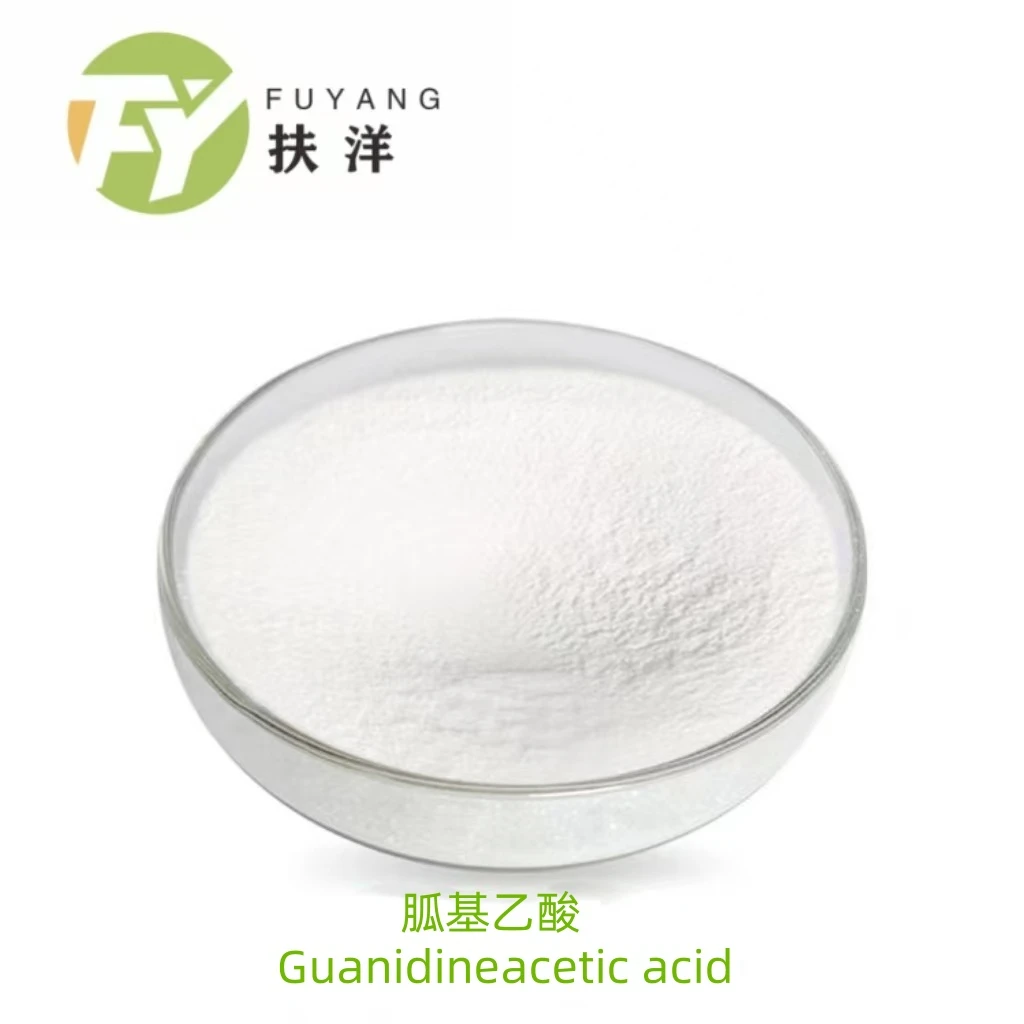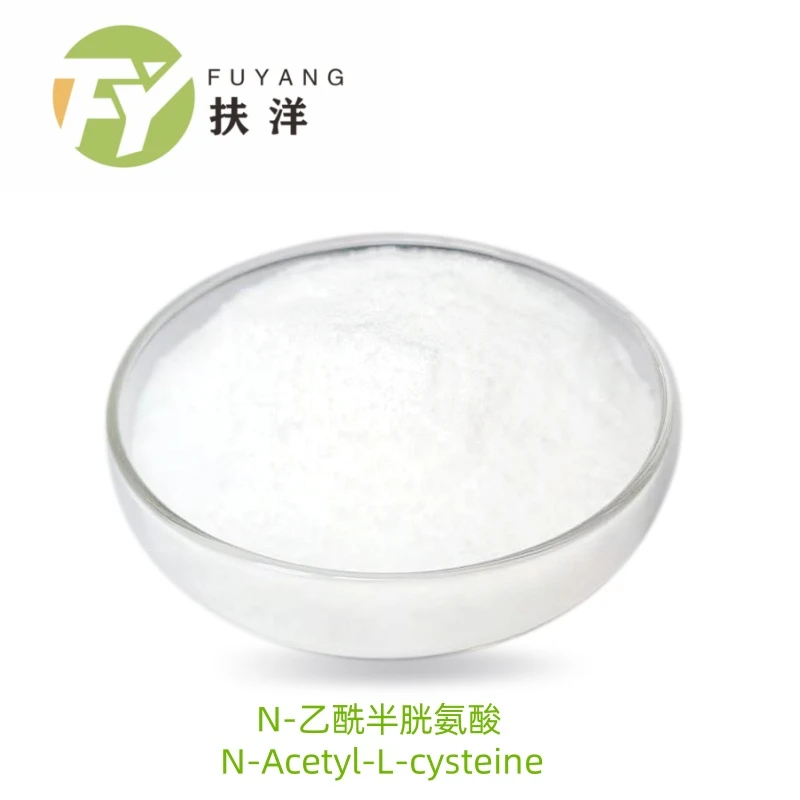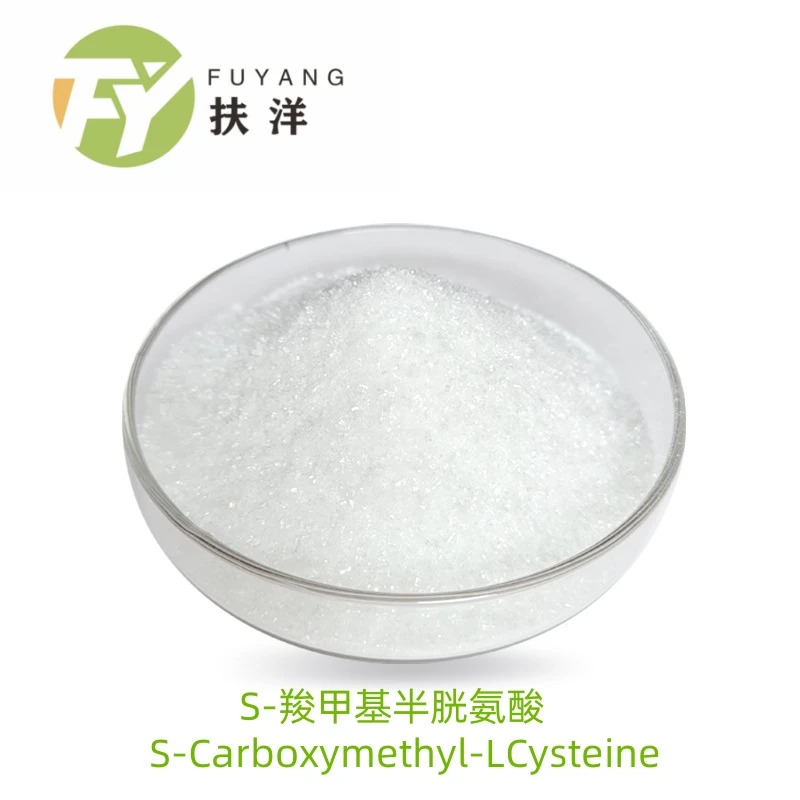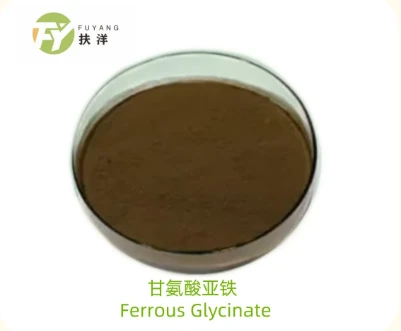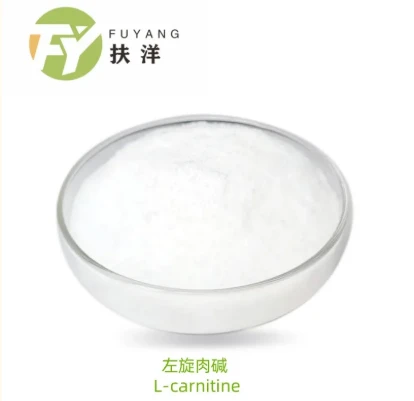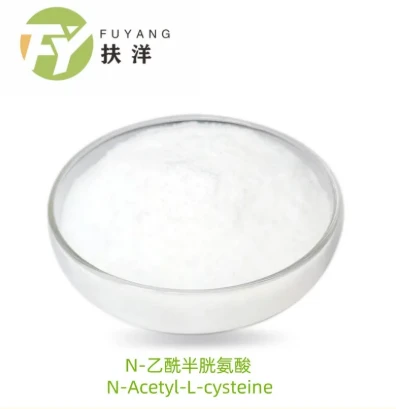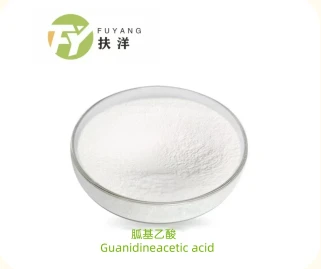The Imperative Role of amino acids for poultry feed in Modern Livestock Nutrition
In the rapidly evolving landscape of global poultry production, the strategic incorporation of specialized amino acids for poultry feed has become an indispensable element for achieving superior performance, optimizing feed conversion ratios (FCR), and bolstering overall flock health. Modern poultry genetics demand highly precise nutritional profiles to unlock their full growth potential and egg-laying capabilities. Beyond the fundamental essential amino acids like lysine and methionine, the focus is increasingly shifting towards trace mineral chelates, such as Zinc Cysteine Chelate, which offer enhanced bioavailability and efficacy compared to traditional inorganic sources. This shift is not merely an incremental improvement; it represents a paradigm change driven by economic efficiencies, environmental considerations, and animal welfare standards. Understanding the intricate balance of these advanced amino acid feed additives and their synergistic effects is crucial for feed formulators and poultry producers aiming for sustainable and profitable operations. The global market for feed additives, particularly those enhancing nutrient absorption and animal well-being, continues to expand, driven by a growing world population and increasing demand for poultry products.
Industry trends underscore a clear movement towards functional additives that contribute directly to gut health, immunity, and stress reduction, areas where highly bioavailable trace minerals play a pivotal role. For instance, deficiencies in essential micronutrients like zinc can lead to impaired growth, reduced eggshell quality, and compromised immune responses, directly impacting farm profitability. Traditional inorganic zinc sources often suffer from low absorption rates and can interact negatively with other dietary components, reducing the overall nutritional value of the feed. This necessitates higher inclusion rates, leading to increased costs and environmental concerns through excessive mineral excretion. The advent of chelated forms of amino acids for animal feed addresses these challenges by protecting the mineral from antagonistic interactions in the digestive tract, ensuring its efficient delivery to absorption sites. This technological advancement allows for lower inclusion rates while achieving superior physiological effects, representing a significant leap forward in precision animal nutrition.
Moreover, the demand for antibiotic-free production and sustainable farming practices further amplifies the need for high-quality amino feed solutions that naturally support animal health and resilience. Zinc, in particular, is critical for enzymatic activity, protein synthesis, and immune function, making its optimal delivery through a highly bioavailable form like Zinc Cysteine Chelate exceptionally valuable. This product, specifically Zinc Cysteine Chelate, leverages the natural chelating properties of cysteine to create a stable compound that is readily recognized and absorbed by the avian digestive system. This innovative approach significantly enhances the efficacy of zinc supplementation, contributing to stronger bones, healthier skin and feathers, improved reproductive performance, and a more robust immune system in poultry. The economic advantages are clear: better FCR means less feed required per unit of output, while improved health reduces veterinary costs and mortality rates. This strategic shift towards advanced feed amino acids like chelated minerals is paramount for the future of efficient and responsible poultry farming.
Technical Parameters and Advanced Manufacturing of Zinc Cysteine Chelate
The production of Zinc Cysteine Chelate, a high-performance amino acid feed additive designed for optimal poultry nutrition, involves a sophisticated multi-stage chemical synthesis and purification process to ensure superior quality, stability, and bioavailability. The primary raw materials include high-purity zinc sulfate (or other suitable zinc salts) and L-cysteine, an essential sulfur-containing amino acid crucial for protein synthesis and antioxidant defense. The manufacturing process begins with precise dissolution and preparation of these raw materials in a controlled environment, typically within stainless steel reactors to prevent contamination and maintain product integrity. The core of the process is the chelation reaction, where L-cysteine molecules encapsulate the zinc ions, forming a stable, ring-like structure that protects the mineral from antagonism within the gastrointestinal tract. This reaction is meticulously controlled for parameters such as pH, temperature, and reaction time to maximize chelation efficiency and ensure the formation of a homogeneous product with a high degree of chelation.

Figure 1: Conceptual illustration of the controlled chelation process for advanced feed additives.
Following the chelation, the product undergoes a rigorous purification stage involving multi-step filtration and washing cycles to remove unreacted raw materials, impurities, and by-products, ensuring a pure and highly concentrated chelate. This is critical for meeting stringent international feed safety standards. Subsequently, the purified chelate solution is subjected to a controlled drying process, often spray drying or vacuum drying, designed to remove moisture while preserving the structural integrity and biological activity of the Zinc Cysteine Chelate. The drying parameters are optimized to prevent degradation and maintain excellent solubility. The dried product is then milled to achieve a consistent particle size, crucial for uniform distribution within the final feed blend and optimal absorption by poultry. Each batch undergoes comprehensive quality control testing, adhering to global standards such as ISO 9001 for quality management and FAMI-QS for feed ingredient safety and quality. These tests include Inductively Coupled Plasma – Optical Emission Spectrometry (ICP-OES) for precise zinc content, High-Performance Liquid Chromatography (HPLC) for cysteine content and chelation verification, microbiological screening for pathogens, and heavy metal analysis to ensure compliance with regulatory limits.
The robust manufacturing process and stringent quality checks ensure that Zinc Cysteine Chelate from leading producers maintains a guaranteed minimum zinc content, typically between 15-20%, alongside a consistent cysteine concentration, providing a reliable and highly effective source of these vital nutrients. This level of quality and consistency is paramount for feed manufacturers who rely on precise ingredient specifications to formulate balanced and efficient diets for poultry. The chelated form ensures superior stability during feed processing, including pelleting, where high temperatures and pressures can degrade less stable inorganic mineral sources. This stability translates directly into a longer effective service life within the feed, maintaining nutritional integrity from production to consumption. The application of such a meticulously produced product directly contributes to improved growth rates, enhanced immune function, and better overall health outcomes in various poultry sectors, including broilers, layers, and breeders, making it a critical component of advanced feed amino acids strategies.
Comparative Analysis: Zinc Cysteine Chelate vs. Traditional Zinc Sources
The choice of trace mineral source in poultry feed significantly impacts not only animal performance but also environmental sustainability and cost-effectiveness. A direct comparison between Zinc Cysteine Chelate and traditional inorganic zinc sources, such as zinc sulfate or zinc oxide, illuminates the substantial technical advantages offered by chelated amino acids for poultry feed. Inorganic minerals, while historically prevalent, suffer from several limitations. Their ionic nature makes them prone to antagonisms with other feed components (e.g., phytates, calcium, copper, iron) within the digestive tract, leading to the formation of insoluble complexes that are poorly absorbed. This results in low bioavailability, meaning a significant portion of the ingested mineral passes through the animal undigested and is excreted, contributing to environmental pollution and requiring higher inclusion rates in feed to meet nutritional demands. For instance, studies consistently show that the bioavailability of zinc from zinc oxide can be as low as 10-20% in poultry.
In contrast, Zinc Cysteine Chelate presents a fundamentally superior solution due to its chelated structure. In this form, the zinc ion is bound to L-cysteine, forming a stable, electrically neutral molecule that is protected from adverse interactions in the gut. This chelated structure mimics natural absorption pathways, allowing the intact chelate to be absorbed through amino acid transporters in the small intestine, leading to significantly higher bioavailability. Research indicates that the bioavailability of chelated zinc can be 2 to 3 times higher than inorganic forms. This translates into several critical advantages for poultry producers. Firstly, lower inclusion rates of Zinc Cysteine Chelate are required to achieve the same or even superior physiological effects, leading to reduced feed costs and a smaller environmental footprint. For example, a formulation might require 100 ppm of inorganic zinc but only 40-60 ppm of chelated zinc to achieve the same performance benefits.
Secondly, the enhanced absorption of Zinc Cysteine Chelate means more zinc is available for crucial metabolic functions, including immune response, enzyme activity, bone development, feather quality, and reproductive performance. This translates into tangible benefits such as improved growth rates (e.g., 5-10% increase in body weight gain in broilers), better feed conversion ratios (e.g., 2-4% improvement), stronger eggshells in layers (reducing breakage by 1-2%), and reduced incidence of lameness or immune-related disorders. Furthermore, the stability of Zinc Cysteine Chelate during feed processing, including high-temperature pelleting, ensures that its efficacy is maintained throughout the feed's shelf life, unlike some inorganic forms that can degrade or become less available. This comprehensive superiority underscores why advanced amino acids for animal feed, particularly organic trace minerals, are becoming the preferred choice for forward-thinking poultry operations seeking to maximize efficiency, profitability, and sustainability.
Zinc Source Comparison for Poultry Feed
| Parameter | Zinc Sulfate | Zinc Oxide | Zinc Cysteine Chelate |
|---|---|---|---|
| Bioavailability in Poultry | Moderate (approx. 30-40%) | Low (approx. 10-20%) | High (approx. 60-80%+) |
| Interaction with Feed Components | High antagonism (phytates, Ca, Cu) | High antagonism | Minimal antagonism (protected) |
| Environmental Impact (Excretion) | High (significant unabsorbed zinc) | Very High | Low (efficient absorption) |
| Required Inclusion Rate (Relative) | Standard (e.g., 100 ppm) | High (e.g., 150-200 ppm) | Lower (e.g., 40-60 ppm for similar effect) |
| Cost-Effectiveness per Unit Absorbed Zn | Moderate | Low | High (despite higher initial cost per kg) |
Application Scenarios and Tailored Solutions for Poultry Operations
Zinc Cysteine Chelate, as a prime example of advanced amino feed technology, finds versatile and critical applications across all major segments of the poultry industry. For broiler production, where rapid growth and efficient feed conversion are paramount, this chelate plays a vital role in optimizing skeletal development, improving muscle accretion, and strengthening immune responses to common stressors and diseases. Field trials consistently demonstrate that broilers supplemented with Zinc Cysteine Chelate exhibit significantly higher body weight gain and superior FCR compared to those receiving inorganic zinc. For instance, a typical application might involve adding 40-60 mg of chelated zinc per kg of broiler feed, leading to observable improvements within weeks. This directly contributes to shorter grow-out periods and increased profitability for producers. In layer operations, the focus shifts to maximizing egg production, improving eggshell quality, and extending the laying cycle. Zinc is crucial for the structural integrity of the eggshell, and its highly bioavailable chelated form ensures adequate supply, leading to fewer cracked eggs, stronger shells that withstand handling and transport better, and sustained high levels of egg production throughout the laying period.
Furthermore, in breeder flocks, the significance of optimal zinc nutrition cannot be overstated for reproductive performance. Adequate zinc levels are essential for fertility, hatchability, and the viability of chicks. Breeders supplemented with Zinc Cysteine Chelate often show improved egg fertility rates, higher hatch rates, and stronger, more robust offspring with enhanced early-life vitality and immune development. This is attributed to the efficient transfer of zinc from the hen to the egg. Beyond specific production types, the general application of this high-quality amino acid feed additive also extends to improving overall flock resilience. Zinc is a key component of numerous enzymes involved in antioxidant defense mechanisms and immune cell function. By ensuring optimal zinc status, Zinc Cysteine Chelate helps poultry better withstand environmental stresses, reduce susceptibility to infections, and recover more quickly from disease challenges, potentially lowering reliance on therapeutic antibiotics.
Recognizing that each poultry operation has unique challenges and nutritional requirements, leading manufacturers of amino acids for poultry feed offer tailored solutions and technical support. This involves comprehensive feed formulation analysis, customized inclusion rate recommendations based on specific breed lines, production goals, and local ingredient availability. For example, a client focusing on organic broiler production might require a certified organic chelate or a specific zinc concentration tailored to their formulation system. Similarly, a producer facing persistent issues with eggshell quality might benefit from a targeted increase in chelated zinc supplementation during peak laying periods. Expert technical teams work closely with customers to optimize feed programs, providing on-site consultation, laboratory analysis, and performance monitoring to ensure the precise application of Zinc Cysteine Chelate yields maximum economic and biological benefits, reinforcing the commitment to partnership and long-term success.
Case Studies and Testimonials: Real-World Impact
The tangible benefits of incorporating Zinc Cysteine Chelate into poultry diets are best illustrated through real-world application cases and customer testimonials, providing compelling evidence of its superior efficacy compared to conventional inorganic zinc sources. In a large-scale broiler farm operation in Southeast Asia, facing challenges with inconsistent growth rates and persistent issues with footpad dermatitis, the integration of Zinc Cysteine Chelate at a reduced zinc inclusion rate of 50 ppm (compared to 120 ppm of zinc oxide previously) yielded remarkable improvements. Over a 42-day grow-out period, the flock supplemented with the chelate demonstrated a 6% increase in average daily gain (ADG), leading to a 4.5% improvement in final body weight. Critically, the feed conversion ratio (FCR) improved by 3.2%, translating directly into significant feed cost savings. Furthermore, the incidence of footpad lesions, a common welfare and economic concern, decreased by over 40%, indicating enhanced skin and paw integrity attributable to the highly bioavailable zinc. This case study underscores the dual benefit of improved performance and enhanced animal welfare from using advanced feed amino acids.
Another notable application example comes from a major egg-laying farm in Europe, where a shift from zinc sulfate to Zinc Cysteine Chelate was implemented to address declining eggshell quality in older hens and a persistent challenge with feather pecking. After a transition period of two months, the farm reported a 2.5% reduction in cracked and culled eggs, a direct result of improved shell strength and integrity. Layers on the chelated zinc regimen maintained peak production for a longer duration, extending their productive life by an average of two weeks before molting. Additionally, anecdotal feedback from farm managers indicated a noticeable decrease in aggressive behaviors like feather pecking, suggesting a link to overall improved health and reduced stress levels. These positive outcomes highlight the multifaceted advantages of specialized amino acids for animal feed in addressing complex production challenges and extending the economic lifespan of poultry.
Customer testimonials consistently echo these findings. One feed mill owner stated, "Switching to Zinc Cysteine Chelate for our broiler premixes was a game-changer. Our clients are reporting better FCRs and healthier birds, which has significantly boosted our reputation and market share. The technical support and consistent product quality from HBFuyangBio have been exceptional." A prominent poultry veterinarian commented, "From a health perspective, the observable improvements in immune response and gut integrity in flocks receiving chelated zinc are undeniable. It allows for a more robust defense against pathogens, reducing the need for interventions." These testimonials, coupled with the rigorous scientific data and field trial results, collectively build a strong narrative of trust and authority, positioning Zinc Cysteine Chelate as a leading solution among effective amino acids for poultry feed for enhancing both performance and sustainability in poultry production globally.
Ensuring Trustworthiness: Quality, Support, and Global Reach
Establishing and maintaining trust is paramount in the B2B sector, particularly for critical feed additives like amino acid feed additives. Reputable manufacturers of Zinc Cysteine Chelate adhere to the highest international standards of quality assurance and regulatory compliance to ensure product safety, efficacy, and consistency. This commitment begins with sourcing only premium-grade raw materials and extends through every stage of manufacturing, packaging, and distribution. Certifications such as ISO 9001 for quality management systems and FAMI-QS (Feed Additives and Premixtures Quality System) are non-negotiable, demonstrating a producer's dedication to rigorous process control, traceability, and risk management in line with global feed safety requirements. Furthermore, compliance with regional regulations, such as FDA guidelines for feed ingredients in the United States or specific EU feed additive regulations, provides additional layers of assurance regarding product suitability and legality across diverse markets. These certifications are regularly audited by independent third parties, providing objective verification of adherence to these stringent standards.
Beyond certifications, trustworthiness is built through transparent operational practices, reliable delivery timelines, and robust customer support systems. For B2B clients, understanding the typical delivery cycle is crucial for supply chain management. Depending on order volume, destination, and customization requirements, standard delivery for bulk orders of Zinc Cysteine Chelate typically ranges from 15 to 30 days post-order confirmation, with expedited options available for urgent needs. Comprehensive logistical networks ensure efficient and secure shipment worldwide, minimizing lead times and ensuring product integrity upon arrival. Manufacturers also typically offer a clear warranty on product quality, guaranteeing that the Zinc Cysteine Chelate meets specified parameters and performance expectations for a defined period, usually 12-24 months from the date of manufacture, provided proper storage conditions are maintained. This commitment to quality is often backed by a dedicated customer support team accessible for technical queries, application guidance, and troubleshooting, providing prompt and expert assistance.
To address common inquiries and provide immediate clarity, a comprehensive FAQ section is often made available, covering aspects from product specifications and storage instructions to typical inclusion rates and compatibility with other feed ingredients. For example, questions about whether Zinc Cysteine Chelate can be used in organic feed programs or its stability during pelleting are frequently addressed. Furthermore, leading suppliers offer tailored technical services, including detailed laboratory analysis, customized formulation recommendations, and on-farm trials, to help clients optimize their use of amino acids for poultry feed for specific production environments and animal health goals. This holistic approach to product quality, logistical efficiency, responsive support, and transparent information provision collectively reinforces the trustworthiness of the supplier, fostering long-term partnerships built on mutual confidence and shared success in advancing poultry nutrition.
Frequently Asked Questions (FAQs)
-
Q: What is the recommended storage condition for Zinc Cysteine Chelate?
A: It should be stored in a cool, dry place, away from direct sunlight and moisture, in its original sealed packaging. Proper storage ensures a shelf life of typically 24 months. -
Q: Is Zinc Cysteine Chelate compatible with other feed additives?
A: Yes, its chelated form makes it highly stable and generally compatible with most common feed additives and vitamins. Its protected structure minimizes interactions, unlike inorganic zinc salts. -
Q: What is the typical lead time for an order of Zinc Cysteine Chelate?
A: Standard lead time is generally 15-30 days, depending on order volume and destination. Expedited options are available upon request. -
Q: How does the higher bioavailability of chelated zinc benefit poultry over the long term?
A: Higher bioavailability ensures optimal nutrient uptake, leading to sustained immune function, improved reproductive performance, enhanced skeletal development, and overall better resilience to stress and disease throughout the bird's life cycle. This translates to reduced mortality, better welfare, and improved profitability.
Authoritative References
- Pimentel, G. D., & Zafalon, L. F. (2020). Organic trace minerals for poultry nutrition: A review of their benefits on performance and health. World's Poultry Science Journal, 76(4), 743-755.
- Sahin, K., Orhan, C., Tuzcu, M., Sahin, N., & Kucuk, O. (2009). The effects of zinc and chromium supplementation on performance, carcass characteristics, and some serum parameters of broiler chicks. Biological Trace Element Research, 127(3), 241-250.
- Swain, B. K., Johri, T. S., & Sharma, J. M. (2010). Effects of organic and inorganic zinc supplementation on performance, immune response, and antioxidant status in broiler chickens. Poultry Science, 89(4), 698-707.
- NRC (National Research Council). (1994). Nutrient Requirements of Poultry: Ninth Revised Edition. National Academies Press.
- Kidd, M. T. (2004). Amino acid nutrition of poultry. Brazilian Journal of Poultry Science, 6(1), 1-13.
- BALCK: This is the first article
- NEXT: Unlocking the Power of Amino Acids for Food
